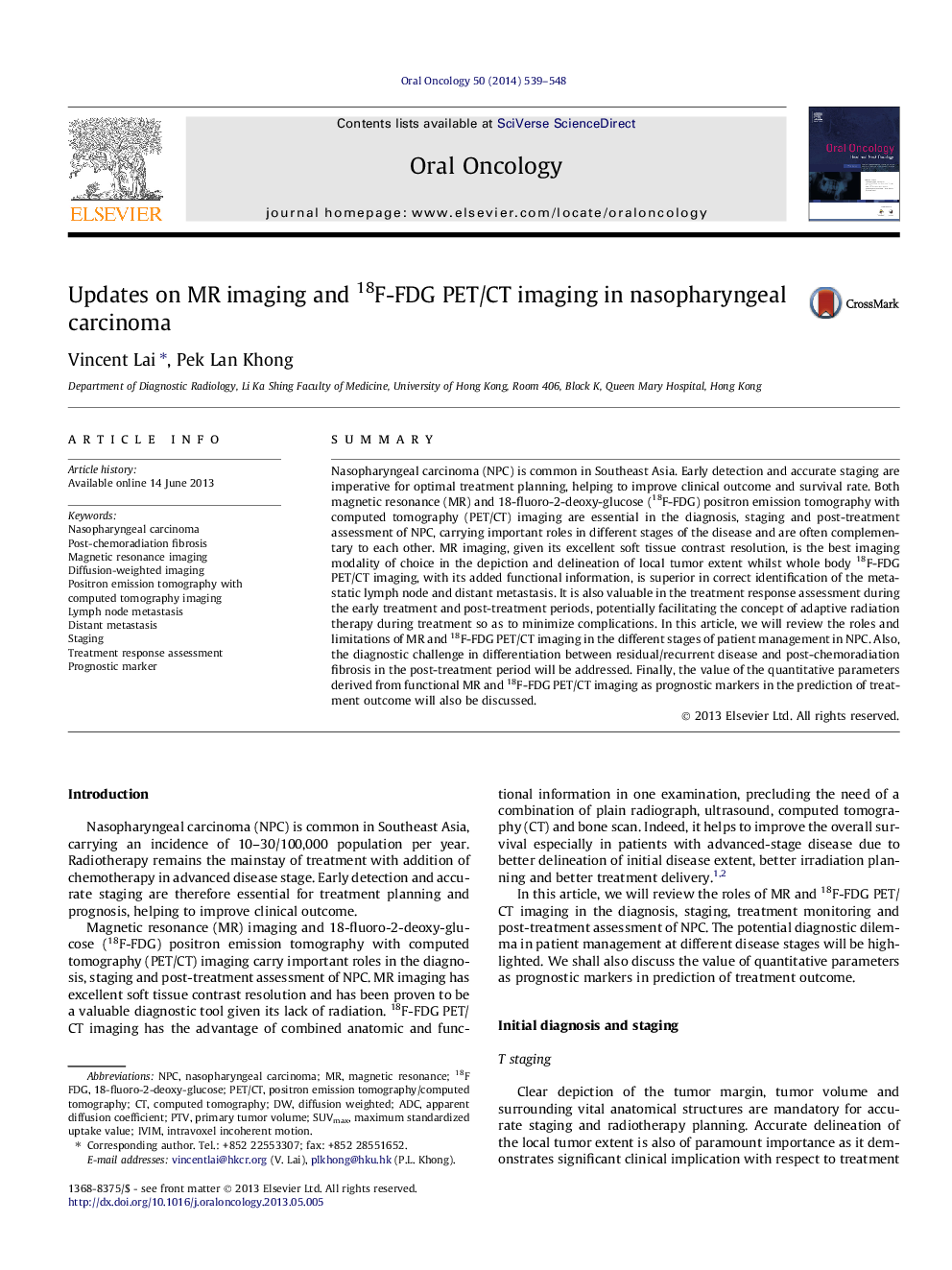| Article ID | Journal | Published Year | Pages | File Type |
|---|---|---|---|---|
| 3164126 | Oral Oncology | 2014 | 10 Pages |
SummaryNasopharyngeal carcinoma (NPC) is common in Southeast Asia. Early detection and accurate staging are imperative for optimal treatment planning, helping to improve clinical outcome and survival rate. Both magnetic resonance (MR) and 18-fluoro-2-deoxy-glucose (18F-FDG) positron emission tomography with computed tomography (PET/CT) imaging are essential in the diagnosis, staging and post-treatment assessment of NPC, carrying important roles in different stages of the disease and are often complementary to each other. MR imaging, given its excellent soft tissue contrast resolution, is the best imaging modality of choice in the depiction and delineation of local tumor extent whilst whole body 18F-FDG PET/CT imaging, with its added functional information, is superior in correct identification of the metastatic lymph node and distant metastasis. It is also valuable in the treatment response assessment during the early treatment and post-treatment periods, potentially facilitating the concept of adaptive radiation therapy during treatment so as to minimize complications. In this article, we will review the roles and limitations of MR and 18F-FDG PET/CT imaging in the different stages of patient management in NPC. Also, the diagnostic challenge in differentiation between residual/recurrent disease and post-chemoradiation fibrosis in the post-treatment period will be addressed. Finally, the value of the quantitative parameters derived from functional MR and 18F-FDG PET/CT imaging as prognostic markers in the prediction of treatment outcome will also be discussed.
